The Bearfoos Trojan is a generic malware detection by Windows Defender, similar to Win.MxResIcn.Heur.Gen, that indicates a potential Trojan Horse infection in the system. While this warning is sometimes a false positive, you should take this malware alert seriously and perform a thorough system cleanup.
Game modes and cracked software often trigger the Bearfoos.A!ml Windows Defender warning, so if you’ve recently downloaded anything like that, it’s probably best to delete it. However, this might not be enough, so we strongly recommend that you complete the following guide.
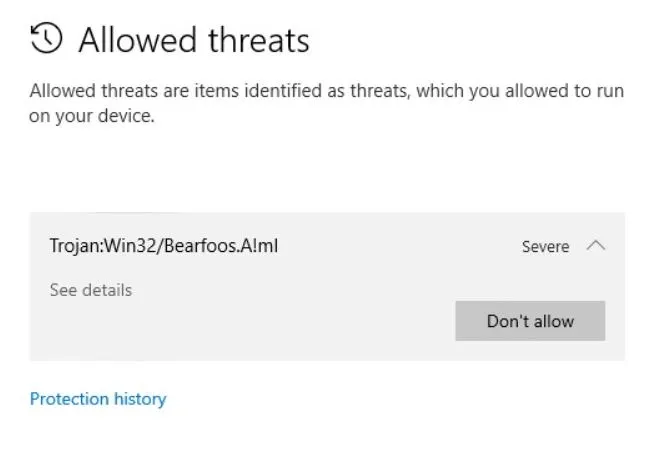
Bearfoos Trojan Removal Guide
We created this guide after hours of research to provide you with the best chance of getting rid of any potential malware that your Windows Defender identifies as Bearfoos.A!ml.
However, Trojan threats are notoriously versatile and adaptable. Their creators can change how they work and what parts of the system they target, so it’s possible that the next steps don’t work in all cases. If the guide doesn’t fully get rid of the virus in your case, we recommend using the removal tool posted on this page to secure your PC.
| Name | Bearfoos |
| Type | Trojan |
| Detection Tool |
*Source of claim SH can remove it.
Before we get to the actual removal, we advise you to create a restore point as a precautionary measure. Don’t worry, the steps in this guide won’t damage anything, but it’s still good practice to have a backup of your system’s settings:
- Open your Start Menu and type System Restore.
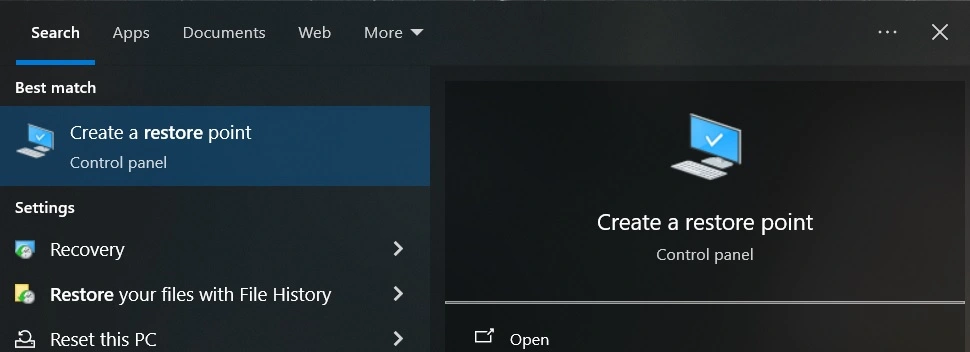
- Press the Enter key, then click Create.
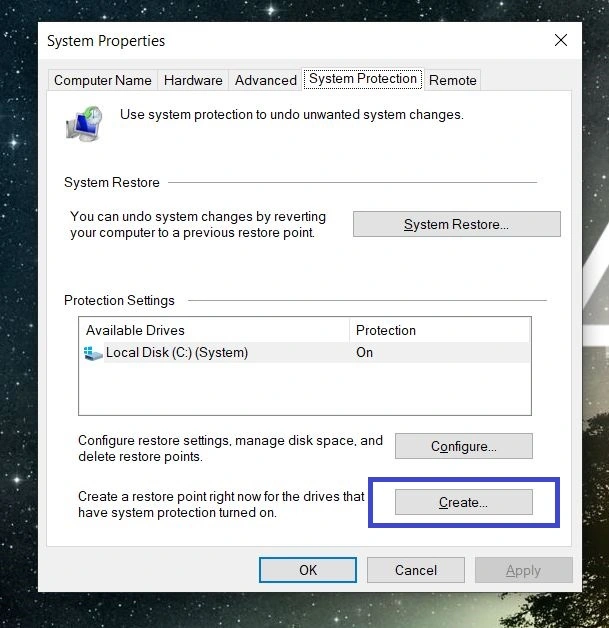
- In the next window, give a name to the restore point, and click Create again.
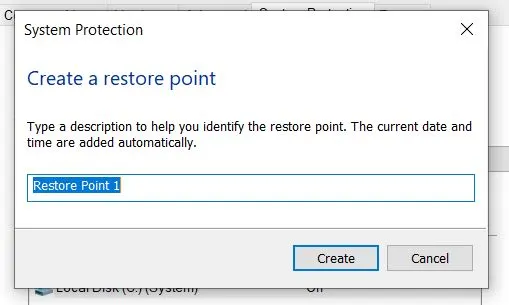
- In case you ever need to use the restore point, go back to the same window, click System Restore > Next, select the restore point, click Next again, and finally click Finish.
We are now all set to proceed with the actual cleanup and deletion of the Bearfoos.A!ml Trojan.
How to Remove Trojan:Win32/Bearfoos.A!ml from your PC
The two main places in your system where you should look for the Trojan are the Task Manager and the Registry. Know that we can’t give you the specific names of the rogue entries you are supposed to look for.
This is because the Bearfoos.A!ml detection could be triggered by many different Trojan iterations, which makes it difficult to pinpoint the exact names of their processes and Registry entries. That is why you’ll have to do some hands-on investigation work and use your discretion to identify the rogue entries. Still, we are confident you’ll be able to take care of it:
- The first and most obvious thing to do when you get this warning is to let Windows Defender delete/quarantine it.
- Next, you must use the Ctrl + Shift + Esc keyboard combination to access the Task Manager.
- If not all processes are shown, click More Details.
- Sort the list of processes by Memory or CPU usage to see the most resource-hungry ones.
- If there’s a process that consumes too much of a given resource yet isn’t linked to a familiar program and has a strange name, chances are that the process is malicious and must be stopped. First, right-click it and click on Open file location.
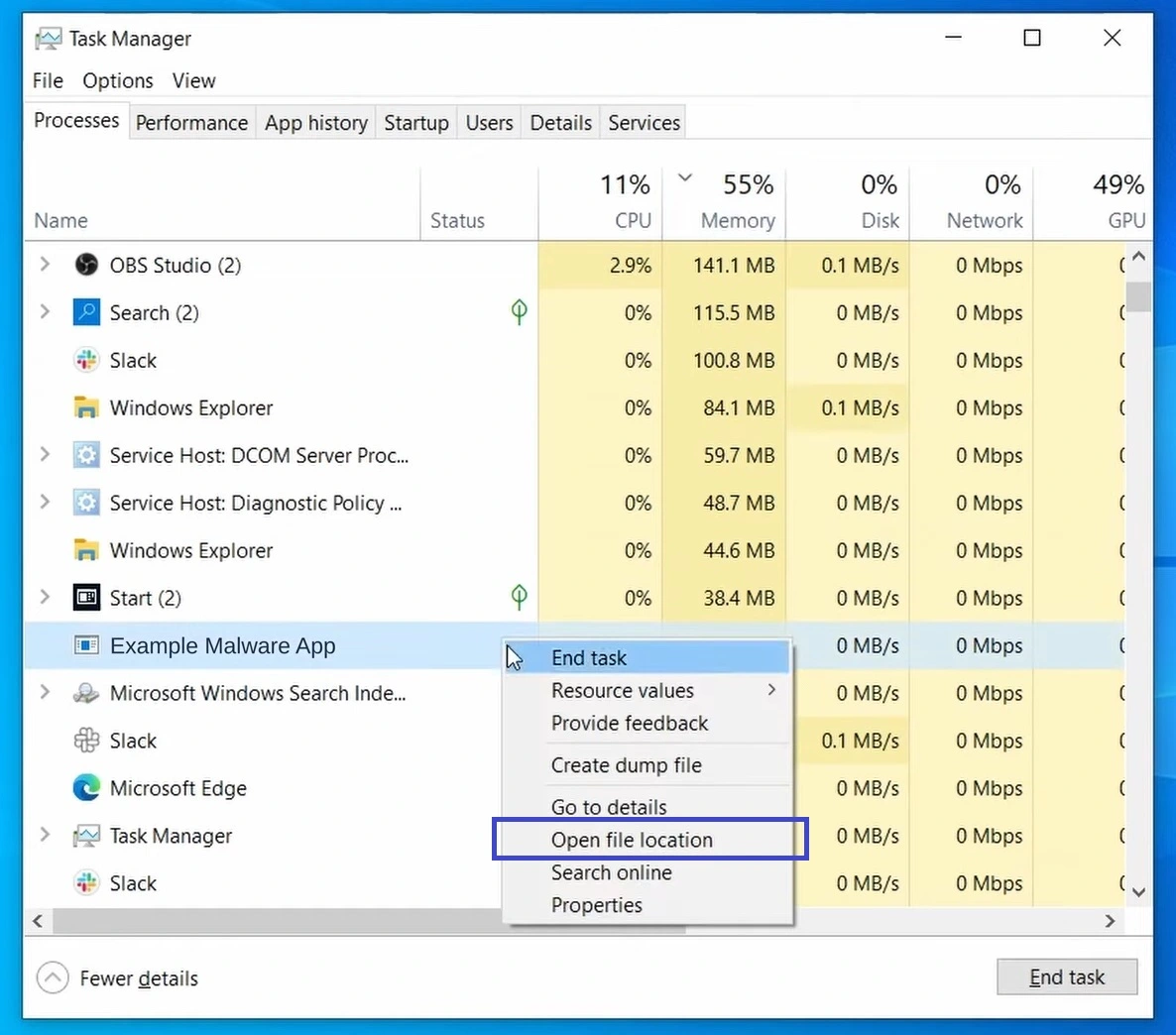
- Delete the entire folder that opens along all its contents.
- It’s likely that you are blocked from deleting something in the folder or the folder itself. If this happens, download and install on your PC the free Lock Hunter tool.
- Then right-click the folder or file that’s blocked. select the “What’s blocking it?” option from the context menu, and then click Delete in the Lock Hunter window that opens. This will both unblock and delete the item.
- Back in the Task Manager, right-click the rogue process again and click End Task.
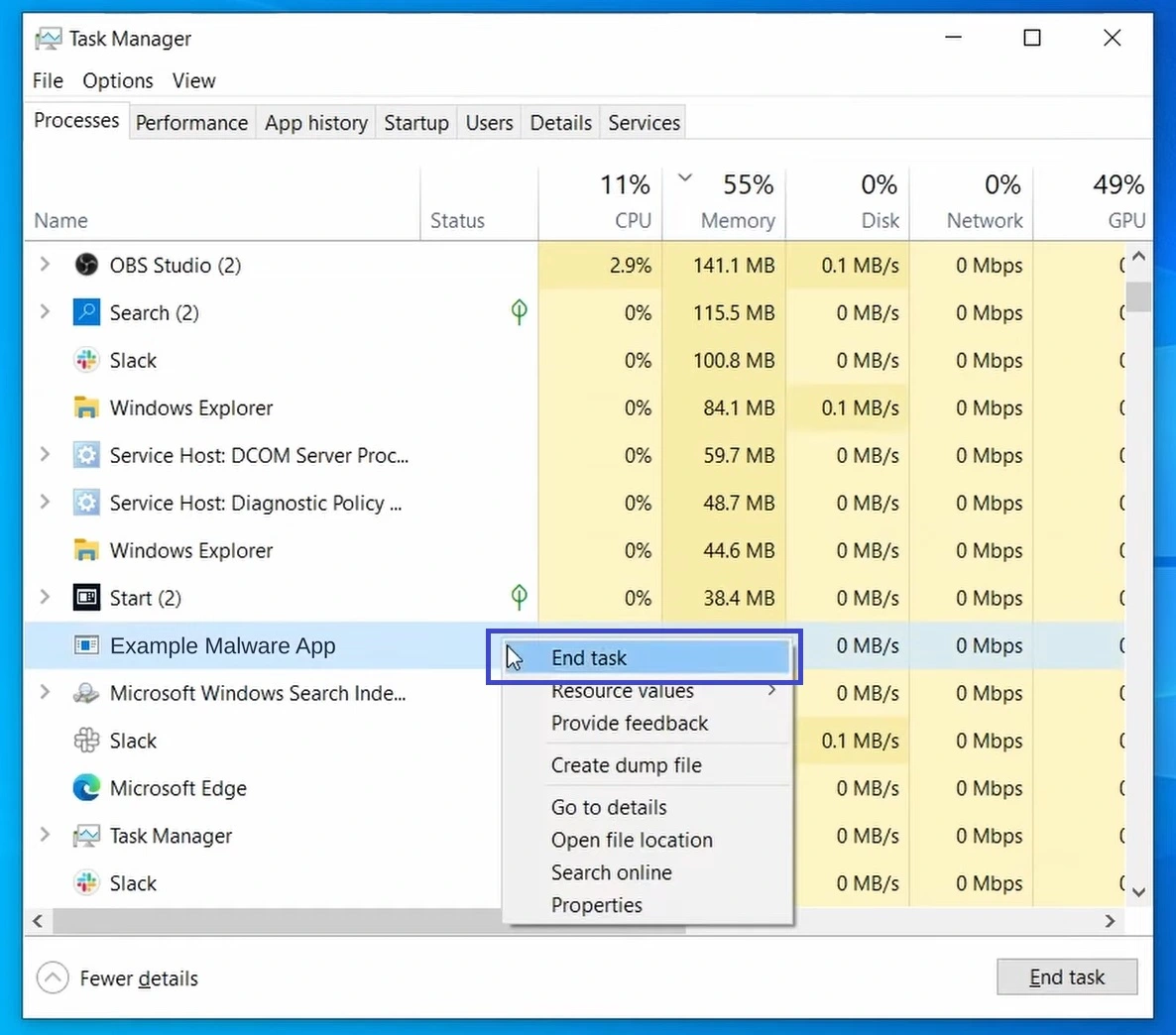
- Next, type Apps & Features in the Start Menu, open the first result, and sort the list of programs that appears by date of installation.
- Look for anything recently installed that seems unsafe, then select it, click Uninstall, and follow the removal prompts. Just make sure to remember the name of the app before deleting it.
- After that, press Winkey + R, type regedit, and hit Enter.
- Press Ctrl + F, type the name of the app you uninstalled in Step 10, and search.
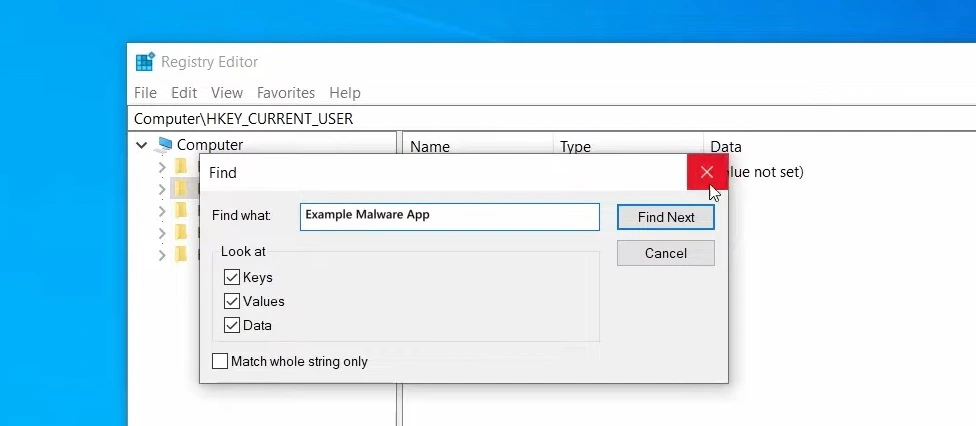
- If you find anything, delete it, search again to delete the next item, and do this until all related entries are removed.
- Finally, search for Task Scheduler in the Start Menu and open it.
- Then open the Task Scheduler Library folder and look for rogue tasks by looking for suspicious names, right-clicking them, and going to Properties > Actions. You may have to spend some time exploring the different tasks and the actions they perform to figure out if there are any malicious ones.
- If you find rogue tasks, right-click them again and then click Delete.
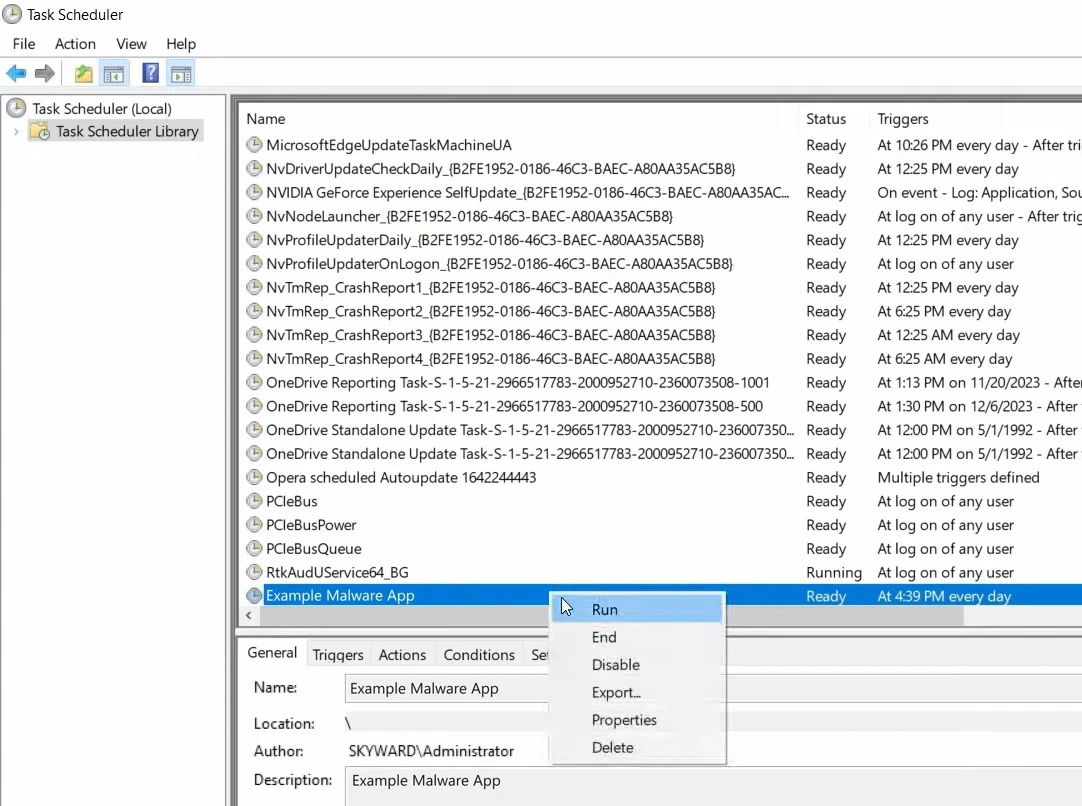
After you’ve done all of this, any Bearfoos Trojan on your PC should hopefully be deleted. That said, if the warning keeps popping up, it’s best to make use of the professional anti-malware tool provided on this page which will thoroughly search your PC for leftover malware and eliminate it.
What is Bearfoos Malware (Is It a False Positive)?
Bearfoos.A!ml is one of those malware detections that are triggered by many different types of software, some of which are indeed harmless. Some users have even reported that custom programs and scripts that they have made on their PCs got flagged as Bearfoos. However, that is not to say that this malware alert cannot be a sign of actual malware that has attacked the PC.
If you are 100% certain that the file or app that got flagged is safe because you’ve downloaded it from a reputable source, then the chances of the Bearfoos.A!ml warning being a false positive are high. For example, some users report that a legitimate Cities Skylines modding tool called Skyve, that’s available on Steam, sometimes triggers this warning.
Obviously, in this instance, it’s almost certain that the detection is a false positive. However, in all other cases where you aren’t so sure, you should treat the flagged piece of data as a potential threat. If you have even the slightest suspicion that the file/program might not be safe, it’s definitely best to delete it and perform a system-wide cleanup in the way we showed above.
How Did I Get the Trojan Bearfoos?
If you got an actual Bearfoos Trojan, there are many potential ways the malware might have entered your PC. In most cases, however, it’s something the user has actively done that has allowed the Trojan into their system. Downloading cracked programs and games or free apps made by unverified developers are all possible ways to get such a Trojan.
One of the most common places on the Internet where users get infected by malware is Steamunlocked – a site for pirated games that are often laced with malware. Many other similar sites exist that can also get you infected with a Trojan, so it’s essential that you are very picky about the software you allow into your PC.
Also, don’t forget to check the setup settings of the installers of apps you do want to have. You never know when a given dev might opt to make an extra buck by letting some sketchy software component be integrated with their otherwise legitimate program.
This is called file bundling, and it’s one of the most common ways people get unwanted software and malware. The good news is most of the time you are able to uncheck the “bonus” component before launching the installation. This is why vigilance is key to keeping your system safe and secure.

Leave a Comment